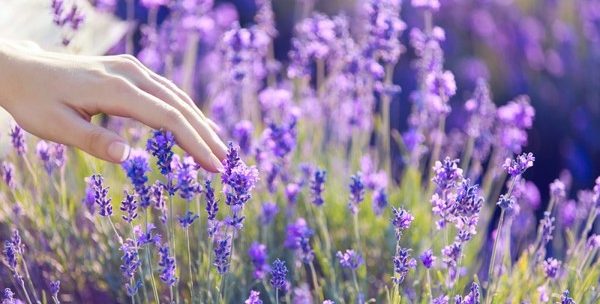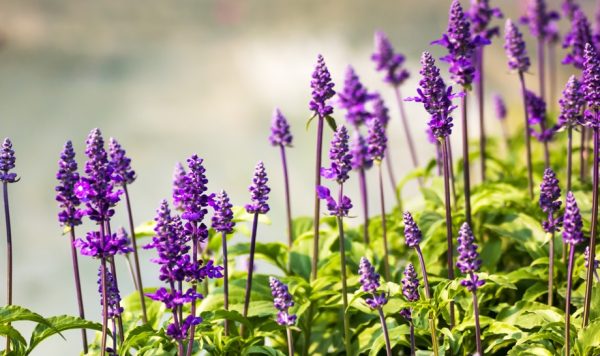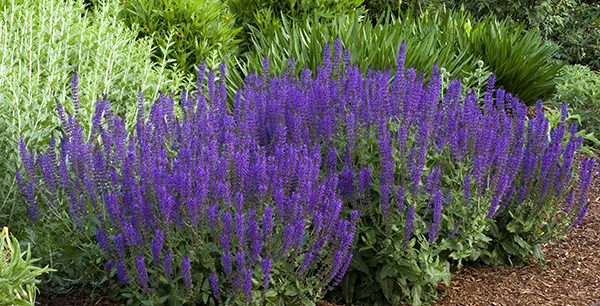We grow sage in the country in simple ways
Content
Landing
Sage loves light loamy or sandy loam soils, neutral and nutritious. You need to choose a place for him in the country house that is open, maybe just a little shaded. In the wild, salvias grow in meadows, along rivers, on forest edges, they love a lot of sunlight and moisture. Approximately such conditions must be created for different species and varieties of cultivated sage, the seeds of which can simply be bought in the store.
There are three ways to plant sage:
- sow seeds in the country;
- grow seedlings at home, and then transfer them to the site;
- ask someone for an adult plant, divide the bush and plant parts of it separately.
After harvesting legumes, potatoes, onions or cabbage (it is after them that salvia grows well) during the autumn digging of the garden, humus or compost is applied to the site, you can add potassium-phosphorus fertilizers. In the spring, before sowing or planting seedlings, nitrogen fertilizers are applied to the soil. Seeds can be sown before winter. This is done at the end of October or even later, so that the seeds do not germinate before frost. They will calmly overwinter, and will sprout when the ground thaws. Seeds are laid in rows to a depth of 4 cm, between them there should be a distance of 20 cm, and between rows - up to half a meter. In the spring, after the emergence of seedlings, the picture will become clearer, it will be possible to thin out, transferring the plants to other places or sowing.
When sowing in spring, it is advised to treat the seeds with a growth stimulant (for example, soak them in Energen for a day, then dry them), sow in rows in grooves in an area with prepared soil. They are deepened by no more than 2 cm, they leave up to 30 cm between the plants, and up to 50 cm between the rows. Crops are made in March-April. If the ground has already thawed, but there may still be cold weather, the crops can be covered with a film or non-woven cloth.
Seedlings are prepared at home so that they can be planted at the end of April. The seeds are soaked, the hatched seeds are placed in a light nutritious soil. After about 2 weeks they sprout, after another week they can be dived or simply transplanted into separate cups (great if they are peaty). When the real warmth comes, strong grown plants are planted in the garden.
It is best to divide the bush and plant its parts at the end of summer. You can cut the cuttings and root them in water - this is done at any time. And if you bend the twig and dig in with earth, additional roots are formed, after a couple of months it is cut off from the main plant and planted separately.
Video "Tips for Gardeners"
A demonstration video with helpful tips for gardeners.
Care
Sage is modest and unpretentious, it can grow without additional fertilizing and even with a lack of moisture. But after all, we grow it to admire the charming long flowering, and the medicinal varieties - to collect the leaves, which means that we must create favorable conditions so that the flowering lasts from mid-summer until the onset of cold weather, and the leaves are juicy and fragrant.It's not hard to do at all.
Perennial varieties can be grown as one or two years old, that is, they can be updated often, or they can be covered with leaves or branches for the winter, and in the spring they can be decisively pruned by shoots, leaving 10 cm from the soil. This spring pruning will rejuvenate the plant and stimulate the growth of new shoots. In the fall, after flowering and harvesting, all shoots can be cut off - this helps to strengthen the root system. Usually, autumn pruning is carried out in the first years of growth, and then they switch to spring pruning.
It is necessary to loosen, water and free from weeds all the time. For active growth, sage needs nitrogen fertilizers, so 2 - 3 weeks after planting the seedlings, it is watered with slurry or chicken droppings (diluted 1 to 10). Sometimes, to stimulate long flowering, you can feed with potash-phosphorus fertilizers.
Watering is necessary as needed, if the plant does not have enough moisture, its leaves become tough. Excess moisture, an abundance of weeds or plant debris can attract pests - slugs, snails, thrips, spider mites. Therefore, it is necessary to avoid dense thickets so that each plant has enough light and air. If, nevertheless, parasites appear, the situation will be saved by spraying with an infusion of onion peel or garlic with household soap. Mulching with pebbles or some other small stones will help to preserve moisture and protect from weeds. This is usually done in flower beds. It is very important that the water does not stagnate.
It must be remembered that sage is a cross-pollinated plant, if several species or varieties grow on the site, then they need to be diluted further away or not to use seeds. Salvias can grow in one place for 8 - 10 years, then the place needs to be changed.
Collection
The collection of greens is carried out during the flowering period - that is, almost all summer. You can pick off the leaves so as not to damage the growth of plants, or you can cut off the branches, then they are dried in bouquets suspended by the stems. The leaves are used in cooking or for treatment, both fresh and dried. They are dried, scattered in a thin layer, in ventilated rooms at a temperature not higher than + 35 degrees, away from sunlight.
Greens are used as an aromatic additive to salads, first and second courses. Dried and chopped are used for flavoring dishes and as part of complex spices. For the treatment and prevention of diseases, decoctions of fresh or dried herbs are used. Dried raw materials can be stored for up to 1 year without losing their qualities. But fresh leaves can be stored at a temperature of +1 degrees for no more than a week.
Sage species
In total, about 900 species and subspecies of sage are known, they all differ in aroma, color of leaves, shoots and flowers. Among them are herbaceous, shrubs and dwarf shrubs. Only a few of those used in cooking and medicine are cultivated.
The most common is salvia officinalis, it grows from 20 to 70 cm, has blue or purple flowers, stems and leaves are covered with soft villi. The most popular varieties: "Aibolit", "Nectar", "Breeze", "Semko Patriarshy". Sage meadow (forest, oak, sticky) has bluish-purple flowers, is used as a sedative and antiseptic.
Muscat usually grows as a two-year-old bush 30-40 cm, from which essential oils are obtained, which are actively used by medicine. Dalmatian grows up to 1 m tall, has light green soft pubescent leaves, has a pleasant aroma, and cannot be used in large quantities for food because of toxic substances. Tricolor, purple, Greek, Spanish, narcotic sage - they differ in appearance, smell, composition.
Video "Useful properties of spicy herbs"
An informative video on the beneficial properties of the herb.






